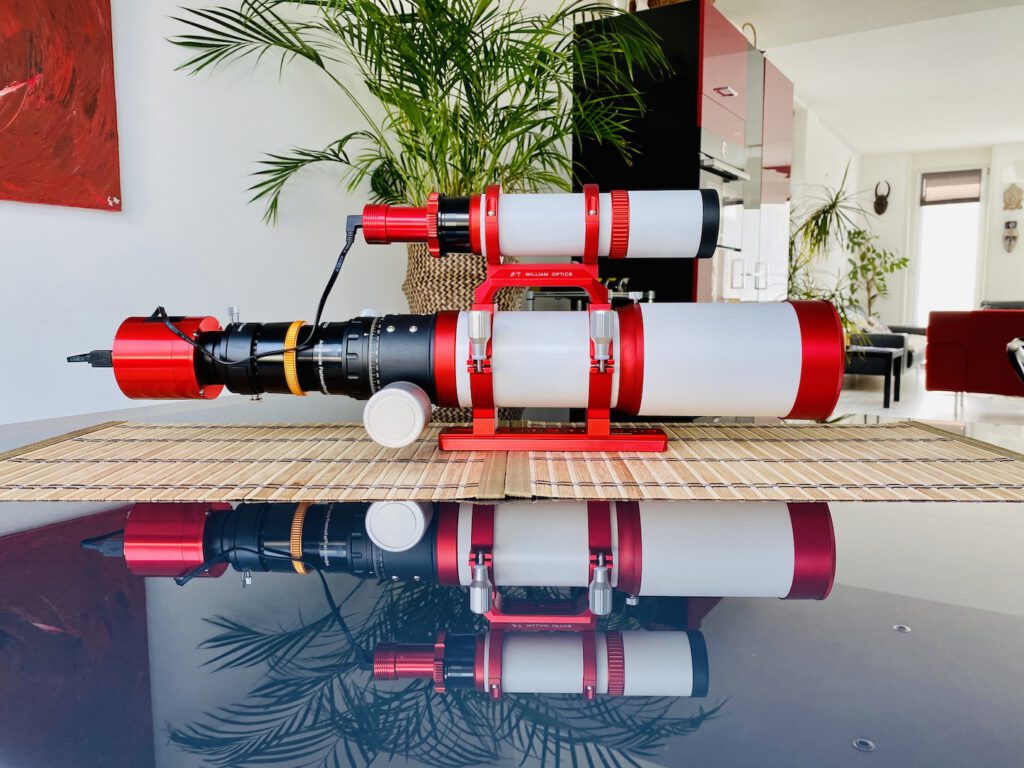Having spent a few weeks experimenting with our camera and wide-angle photography, we decided it is time to get a bit more serious and invest in a telescope. It was not an easy decision because there are so many options depending on your interest, light pollution environment, and your bank account of course. Since we are surrounded by street lights and the Netherlands, in general, is not the darkest place on Earth, we decided to go for narrow-band photography of emission nebulae but keeping the possibility of shooting some of the brighter objects in broadband. Gas clouds in interstellar space, heated-up by young stars, radiate in well-defined narrow bands of light within the colors blue/green and red, due to ionized atoms of Hydrogen, Oxygen, and Sulfur (to name the strongest components). Equipped with the specific filters to catch those particular narrow segments of the spectrum, you can increase the contrast of your images a lot since the polluting light does not have much chance to leak through your images. These nebulae are often easily captured with a relatively small-sized telescope. The best quality small telescopes are apochromatic refractors with multiple elements of low-dispersion glass.
We further had to decide on the exact configuration, what type of astronomical camera to use, what mount should support the equipment, and how to control the whole thing. The best resources to make the final decision was the astrophotography book “Making every photon count” by Steve Richards, and the broad support and excellent help we received from Ganymedes (thanks Paul!). The astro-weather conditions are such in the Netherlands that one does not have infinite opportunity to record every possible spectral line independently on a monochromatic camera and blend them in a final image. Instead, we went for an excellent dual narrow-band filter (H-alpha – OIII; ahh, sorry SII for now!) and a single-shot cooled color CMOS camera. The mount had to be robust but relatively lightweight and easy to handle, so at least within Europe, we could drag the equipment along by car to discover new cities and skies.
It took some time to arrive, and the weather went all crazy in October/November 2020 of course. But finally, here it is, our final configuration:
William Optics Gran Turismo 81mm, focal length 480mm (f/5.9)
WO flattener/reducer 6AIII 0.8x, effectively making it a 384mm system (f/4.7).
WO 50/200 UniGuide telescope for accurate guiding
ZWO ASI 533MC-P main camera with 3.76 micrometer-sized, 3008 x 3008 pixels
ZWO ASI120MM mini guide camera
ZWO ASIair unit to control everything
iOptron CEM40 mount on 1.75-inch LiteRock tripod
Optolong L-pro light pollution filter (for broadband imaging)
Optolong L-extreme dual narrow-band filter (Ha-OIII) — expected to arrive any time soon!

